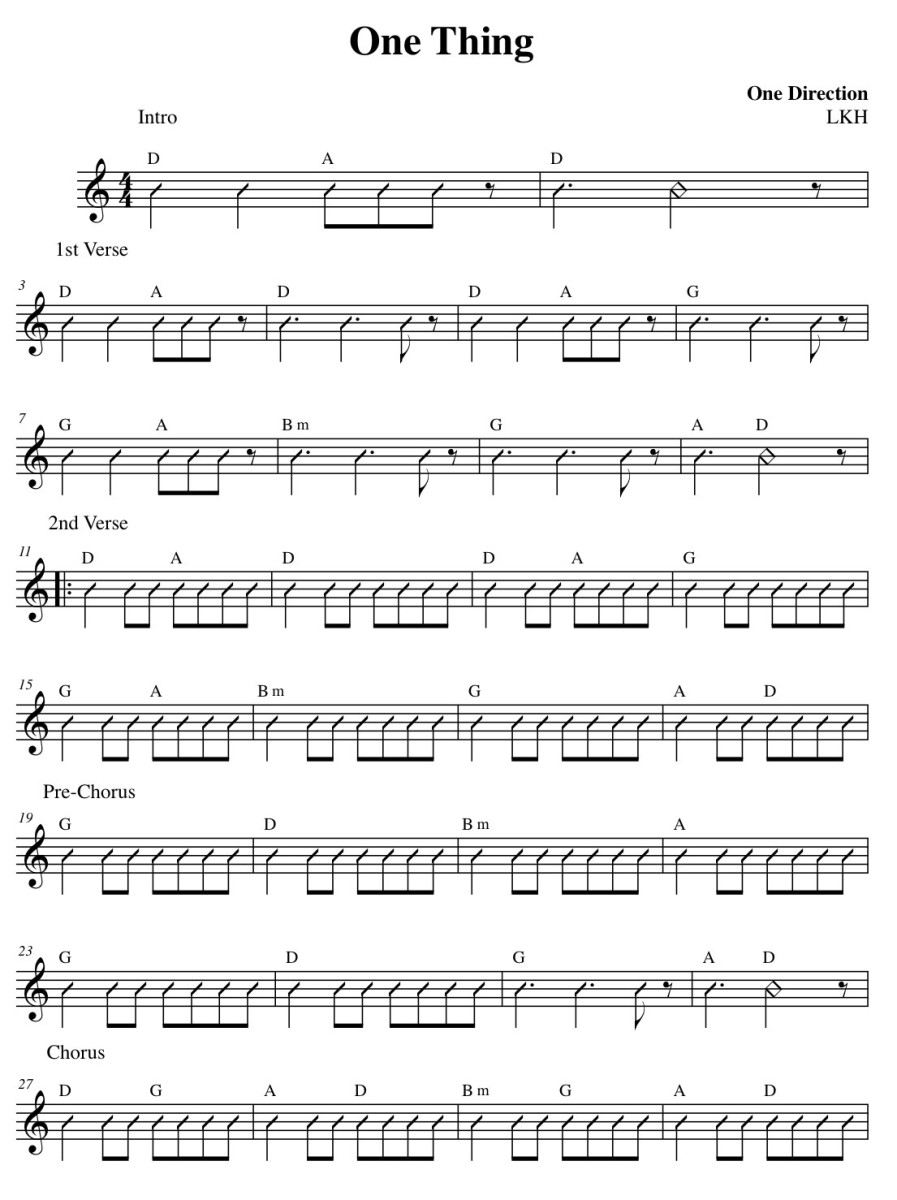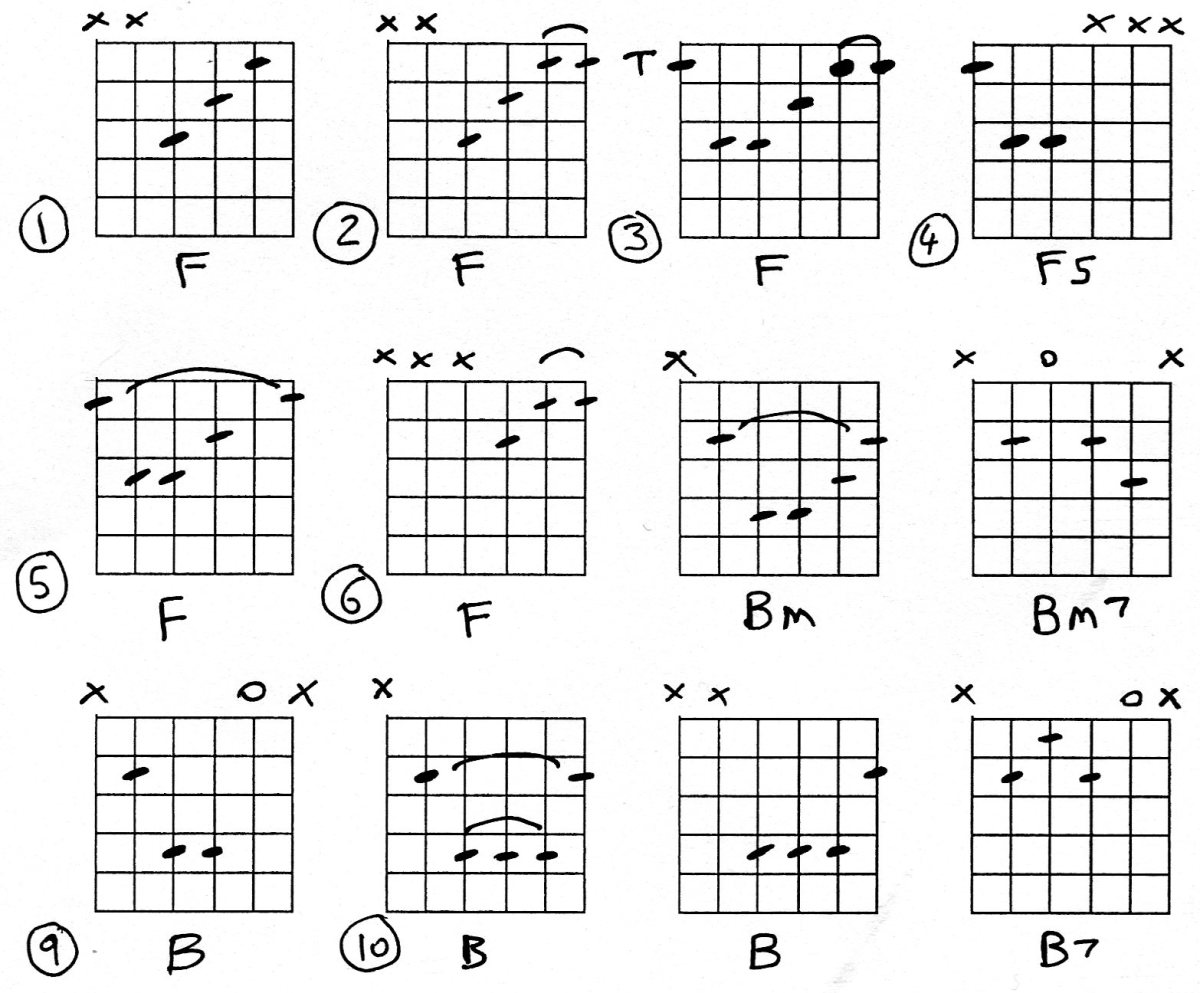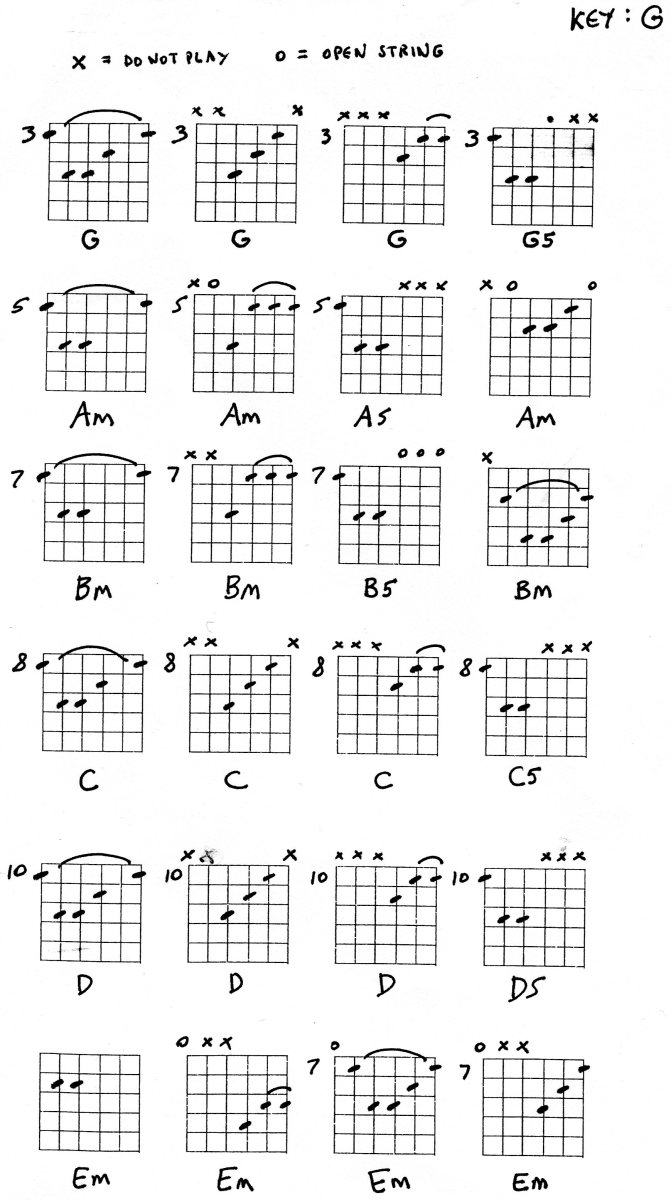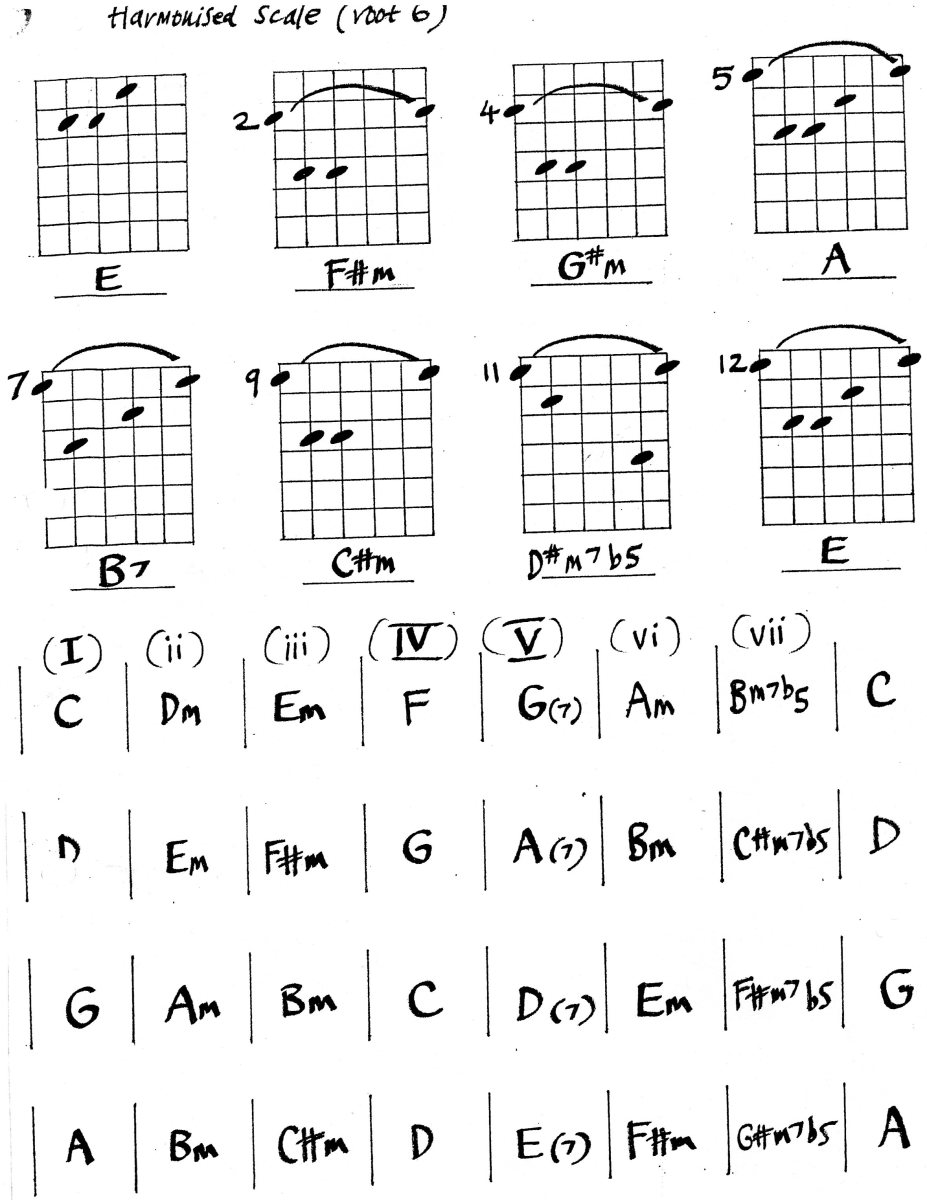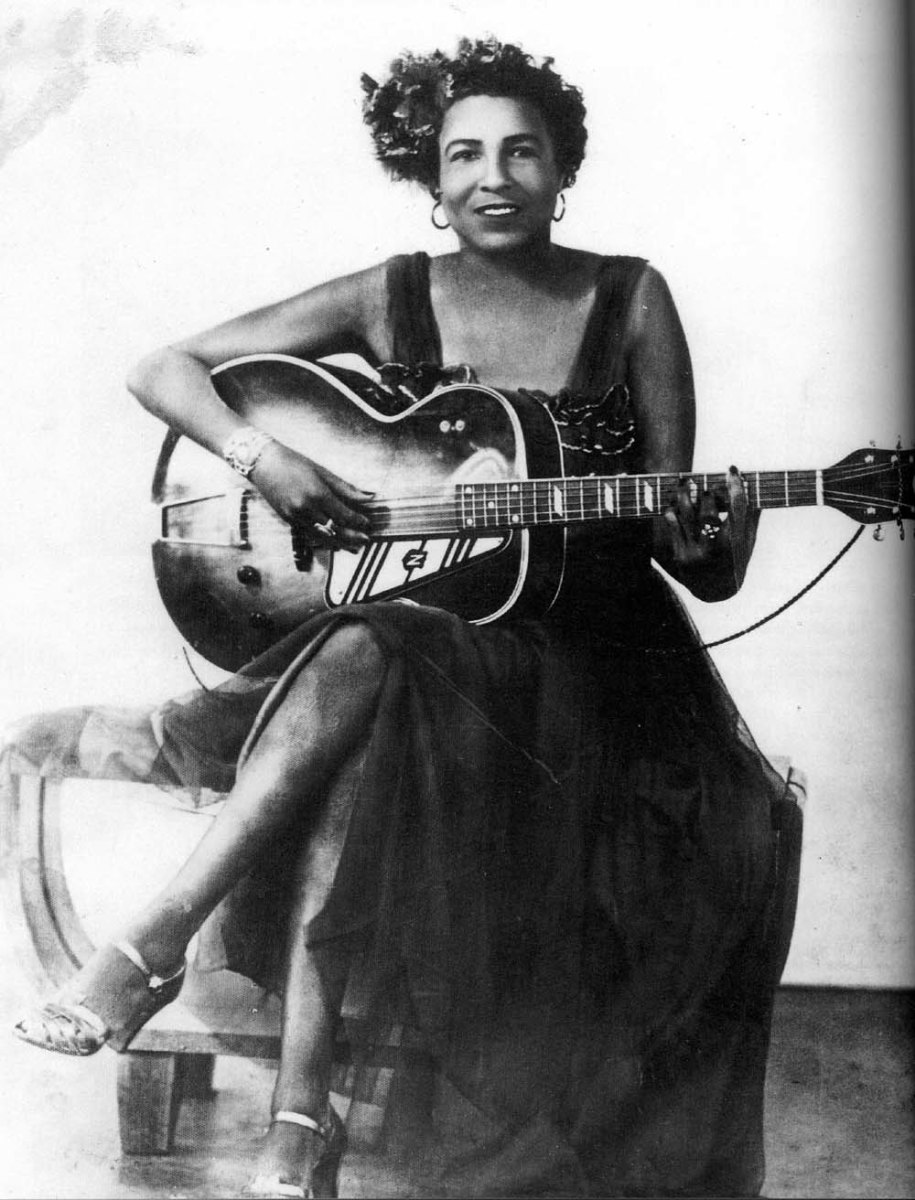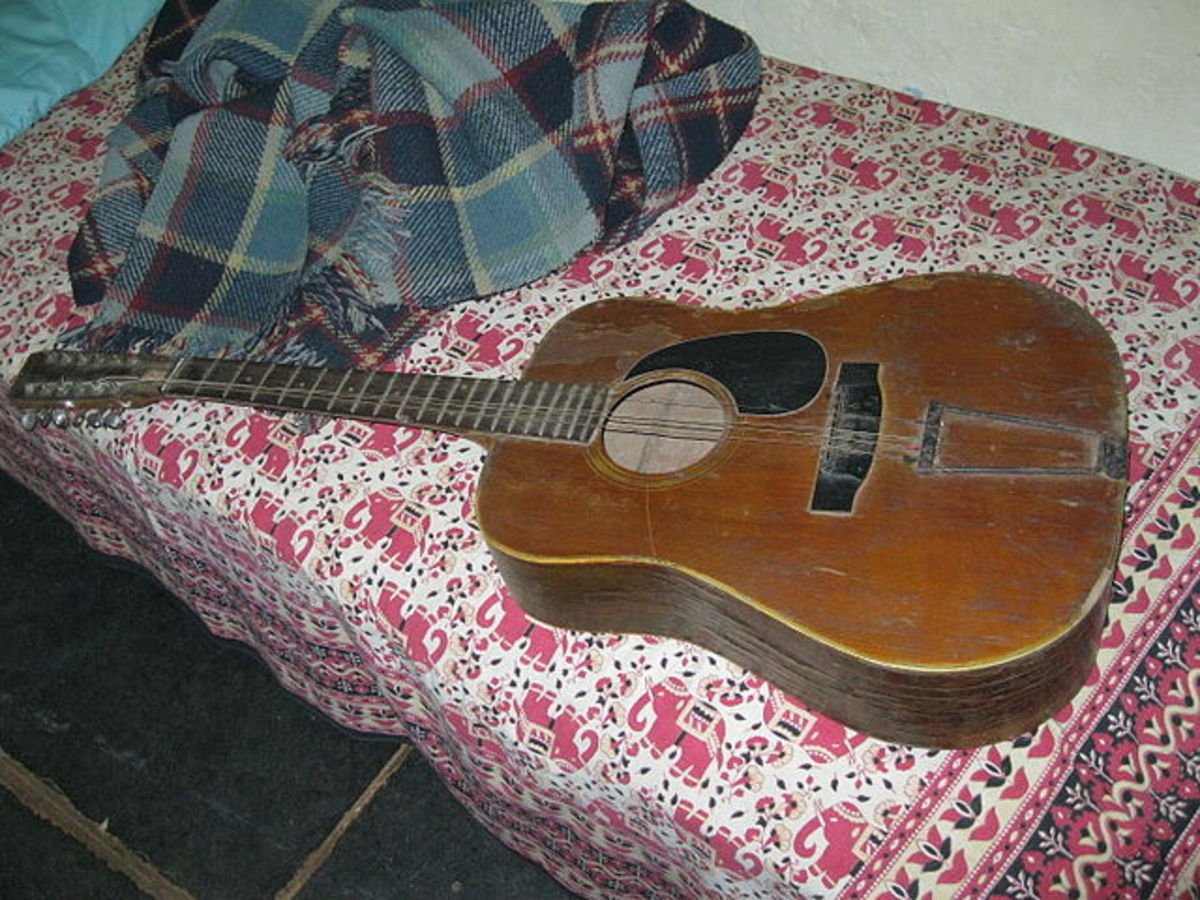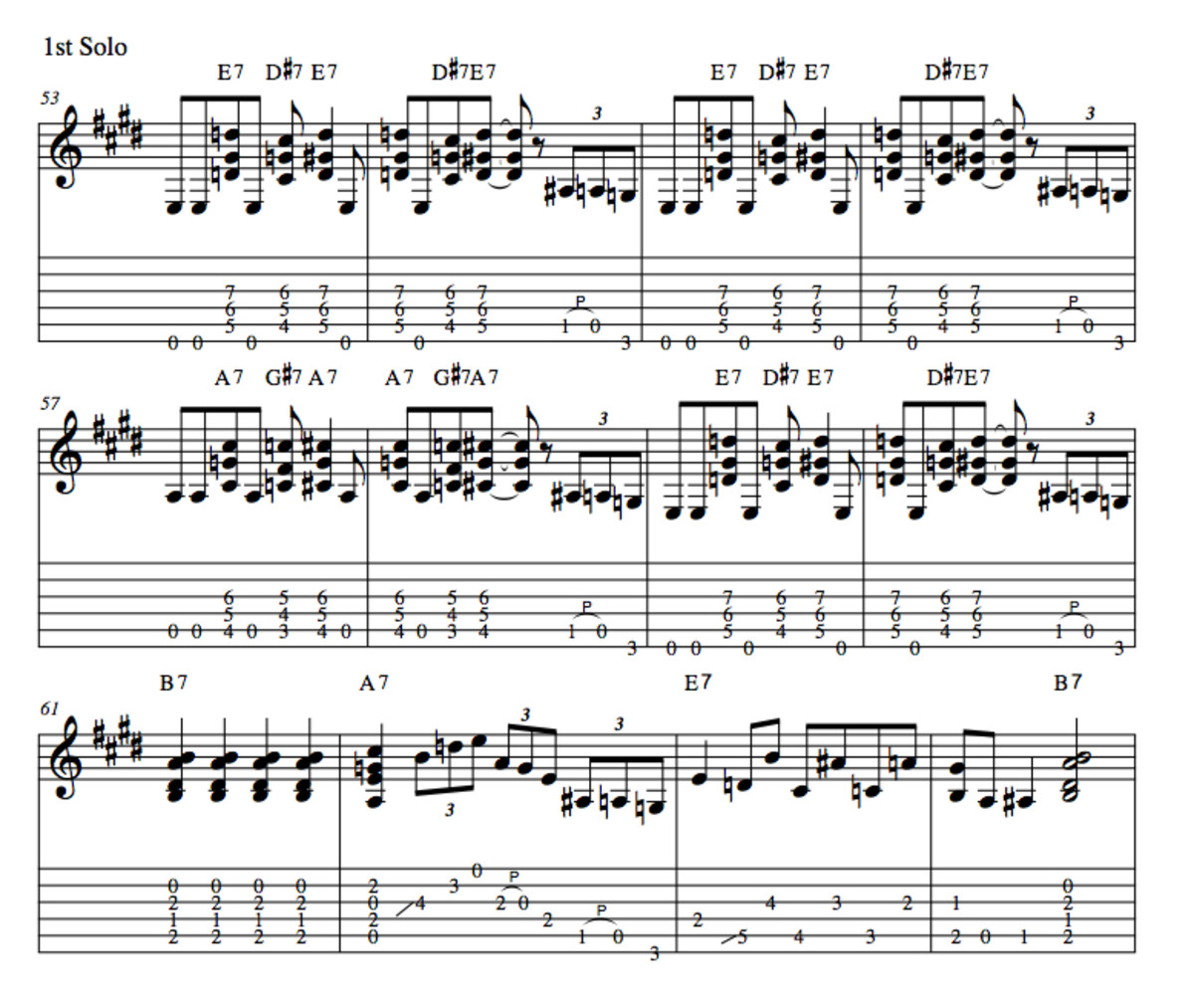Guitar Chords, Blues Riff
Guitar 12-bar blues in A
The guitar tab below shows a good boogie riff pattern for 12-Bar blues in the key of A. The A riff is one bar long, so you play it 4 times, then the D riff 2 times, A riff 2 times as per the bar pattern. Finally, one bar of E, one bar of D, one bar of A, one bar of E. At any point you can play the chord on the first beat of the bar. The rhythm is a shuffle rhythm - you could try copying "humpty-dumpty humpty-dumpty" for each bar.
This chord pattern is used for hundreds of songs, sometimes with slight variations.
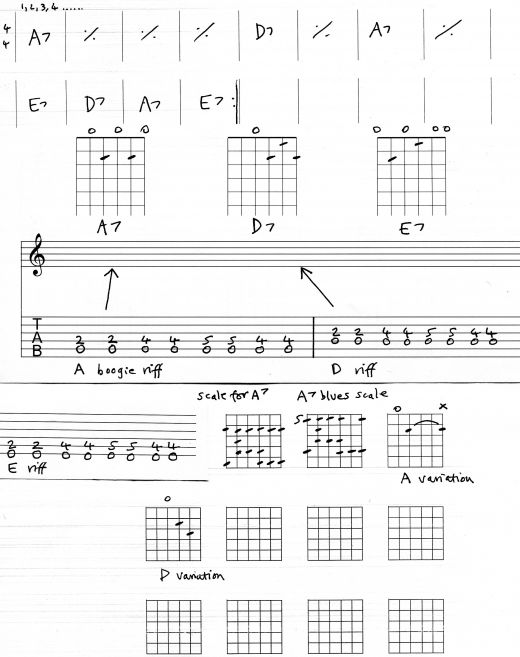
Chords and riffs
If you have a guitar-playing compadre you could combine the chord with the riff, or by using the rock n'roll version of A shown you can play it all on one guitar. The same thing will work with the D and E chords.
For authentic blues, use A7, D7, and E7 for the chords. Bottom line is, if it sounds good, it is good!
If you were playing a 12-Bar blues in the key of E, the chords would be E7, A7 and B7, in exactly the same pattern. You can use the same riffs on the E7 and A7 chords that you've just learned, it's just that the order is different. In other words, this is transferable material. If you need to play in a different key, you could always use a capo - for instance, a 12-bar in E with a capo at fret 3 will give you a 12-Bar in G, at fret 1 it would be F.
Quick-change Blues: this is a very common variation. Replace bar 2 with the IV chord, so in the key of A we now have:
A7 D7 A7 A7 for the first four bars. An example of this would be Sweet Home Chicago, originally by Robert Johnson. Roll Over Beethoven by Chuck Berry is the same.
Scales
You can use both the scale patterns shown for playing lead guitar parts. Note that this is a pentatonic scale pattern, with one extra note added. The first one is good for country rock and blues rock, the second pattern starts at fret 5 instead, up 3 frets, and gives you a more blues sound. But you can mix them up any way you want. Try bending notes too.
These scales are also transferable. Your little finger (4th finger) is on the tonic note for shape 1, your first finger is on the tonic note for shape 2. Make sure this makes sense, because it will save you a lot of time learning scale patterns.
Guitar theory
You can find the chords for any 12-Bar blues by using the cycle of fifths, a music theory diagram that is very useful. See my hub entitled Music theory - cycle of fifths.
On the diagram you can pick any key, and the notes on either side of the one selected will be the other chords, in other words the I chord is next to the IV and V chords. Then make them all 7ths.
For example, C7,F7 and G7
G7, C7 and D7
D7, G7 and A7.
Further listening
The type of blues we're looking at here is so widespread that there are endless examples. Here are some guitarists who use this 12-Bar blues, or variations of it:
- Eric Clapton
- BB King
- Chuck Berry
- Rolling Stones
- Stevie Ray Vaughan
- The tables below are for a Quick Change 12-Bar blues, in two keys. The only difference is that bar 2 goes straight to chord IV of the sequence.
Chords for 12-Bar Blues (Quick Change)
A7
| D7
| A7
| A7
|
|---|---|---|---|
D7
| D7
| A7
| A7
|
E7
| D7
| A7
| E7
|
Same, but key of E
E7
| A7
| E7
| E7
|
|---|---|---|---|
A7
| A7
| E7
| E7
|
B7
| A7
| E7
| B7
|

